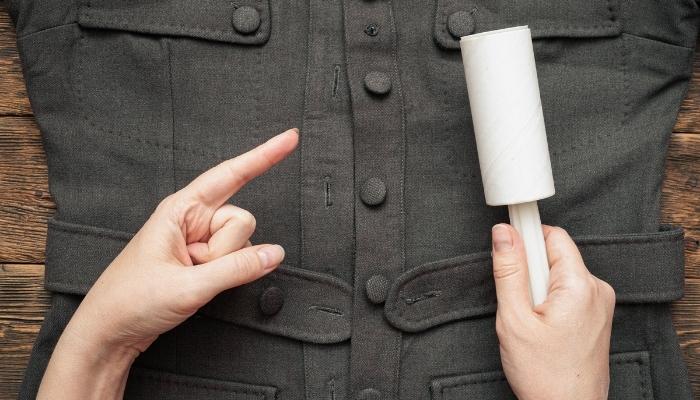Some people can't wait for the snow to fall and winter to begin. They love to feel the snow pricking their skin, making snowmen, and breathing in that cool, crisp air. Others… not so much. Other people have a hard time staying warm and dread going outside their warm, toasty houses.
But that's okay! You don't have to love the cooler season to enjoy time outdoors this season. The key is in the layering!

The 3-Layer Technique
Layering for warmth sounds like a no-brainer. You've done it in the past, and it's worked. But you probably felt like an overstuffed, puffy version of yourself and found yourself sweating too much and feeling itchy. That's because you were layering the wrong fabrics.
The key to effective layering is what you use in your base layer, middle layer, and your outer layer.

Base Layer
When you layer up for warmth, sweating is just a fact of life. But to keep sweating to a minimum, you need your base, or bottom-most layer, to be a light and airy fabric with moisture-wicking materials like:
- Polyester/polypropylene shirts, camisoles, long underwear
- Silk shirts, camisoles
- Medina wool long-sleeved shirts (if you don't have anything else)
Pro Tip: Cotton doesn't evaporate moisture, so don't use it as your base layer unless you have light, breathable camisole underneath.
Middle Layer
Insulation does the most to keep you warm, and that's where the middle layer comes into play to trap in the heat but it also needs to remain breathable. For that, you need layers such as:
- Wool sweaters (try Medina wool to counter itchy feeling)
- Fleece sweaters, sweatshirts
- Down coats or vests
Pro Tip: Make sure the fit isn't too tight so that you can have space between your skin and the cold air!
Outer Layer
Nobody likes feeling like a human popsicle, so you'll need to stay dry and away from the wind. If you live in an icy tundra, this may seem like a pipe dream, but there are some materials that help keep the wind and rain at bay:
- Down puffer or wool pea coats (for clear days)
- Nylon rain jackets with proper venting
- Clothes with Gore-Tex, Sympatex, or other specifically engineered materials
Don’t forget to layer your lower half, too. You can wear long underwear or thin leggings underneath for a little bit of insulation!
Pro Tip: Since you lose heat through exposed skin, make sure to cover your extremities with hats, earmuffs, gloves, and socks made from warm, waterproof materials.
Fabrics & How to Wash Them

Keeping your winter clothes fresh and clean can seem like an uphill battle between the build-up of sweat, mud, slush, and other stains. But don't worry, we're here for you. We'll go over the ideal ways to care for each fabric so you can wear your favorite wintertime outfits!
- Polyester/Polypropylene: Cold water wash, then tumble dry or air dry on low heat. Take out when slightly damp to prevent wrinkles and static build-up.
- Silk: Hand wash cycle, or physically hand wash with a few drops of detergent, and then hang to dry. Be sure to check the tag for instructions.
- Wool: Use hand wash cycle, hand wash, or dry clean if indicated on the tag.
- Fleece: Wash in permanent press cycle away from other lint-heavy or fur-covered clothes and then air dry.
- Nylon: Cool water wash cycle with gentle detergents and then air dry.
- Gore-Tex/Sympatex/Other Engineered Materials: Follow tag instructions. DO NOT use fabric softener.
- Down: Wash inside a front-load washer or high-efficiency impeller washer for gentle agitation. Take out and squeeze excess moisture, then place it in the dryer on low heat with dryer balls to retain fluffiness. Hang dry while slightly damp.
Remember to follow the laundry instructions on your clothes' tags for the best fabric maintenance!
Bonus Cleaning Tips!

Before you go adding to your laundry pile, there are a few expert cleaning tips you can do to keep your winter-wear fresh!
- Brush away loose soil and other bits from your coats after wearing them.
- Clean off mud, slush, and salt stains right away to prevent them from setting in.
- Line dry or air dry where you can on curtain rods, towel bars, or collapsible racks.
- Try refreshing clean outer layers to wear again by tumble drying them on low heat with a dryer sheet for 5 minutes!
- Keep sweaters in sweater shape by rolling them in a clean, dry towel after washing them and stretching them to shape.
- Wash hats, gloves, and scarves in a mesh bag to prevent tangles and never lose a glove! Remember to lay these flat to dry.
- Prevent air-dried clothes from feeling crunchy by adding ½ cup of vinegar to the rinse cycle, then shake clothes before hanging them up to dry. If it still feels stiff, toss it in the dryer for 5 minutes with a damp washcloth.
Upgrade Your Washer & Dryer
We know a lot goes into your winter preparations, like checking your heating systems, sealing gaps and cracks, and taking your winter clothes out of storage. But one thing you shouldn't overlook is upgrading your washer and dryer. With new-and-improved machines, you'll get a variety of cycles to care for every fabric, so your clothes are always fresh and clean-smelling!
Have questions about upgrading your laundry appliances? Contact us at Elders Appliance today! We'll assist you with what you need to keep your home running smoothly.